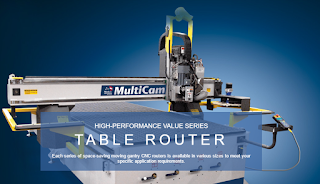Think of your favorite athlete. While you rarely see them warming up on TV, every professional athlete has a warm-up routine they use. If they don’t, they risk injury, and they often don’t perform as well during the contest.
Though not human, your CNC machine works the same way and needs a warm-up routine of its own too.
When you have the right warm-up routine in place, your CNC machine’s lubricated better, which reduces friction and wear and the potential for something to break, and improves the life of your CNC machine. That saves you downtime and unnecessary repair costs.
As you know, heat causes thermal expansion in your CNC machinery. When you warm up your machine, that keeps its temperature stable, which minimizes thermal expansion. That means you get consistent cutting. When you don’t warm-up your machine, thermal expansion has a more pronounced effect, which leads to inconsistent machining. That means you could end up with some unhappy customers who don’t like their product.
When Should You Warm-Up Your CNC Machine?
There’s four times when you know you need to run your warm-up routine:
- Any time your CNC machine has been idle for more than 4 hours.
- If your shop is colder, you should run your warm-up routine even if your CNC machine simply sits idle during your lunch break.
- If you must have a tight cut every time, let the warm-up routine run whenever you take small breaks of any kind.
- When you need to run your spindle at high speeds right away.
What Should Your Warm-Up Program Do?
In many cases, CNC machine manufacturers supply their own warm-up program. If they give you one, then your job is done. No need to create a different warm-up.
However, that’s not always the case. So, you have to create your own warm-up program. Here’s some things to consider if you find yourself in that situation:
- Run your warm-up routine for 200 seconds, starting with the slowest RPM and working your way up to the maximum.
- If you’re running a high-speed machine, again start slow, but only work your way up to the normal operating range, rather than the maximum operating speed.
- You only need to do this for your initial warm-up in the morning. If you have a break during the day, leave your spindle running at its normal operating speed during that time to keep your CNC machine ready to go.
- You should also cycle your tool changer, lathe turret, and briefly turn on the coolant to make sure all are ready to go.
With a simple warm-up routine like this, your CNC machine stays ready to make precise cuts. You prolong the life of your machine and minimize the need for repairs. And your customers stay happy because you give them quality product every time.
Keep this routine in mind whenever you need to run your CNC machine.
























